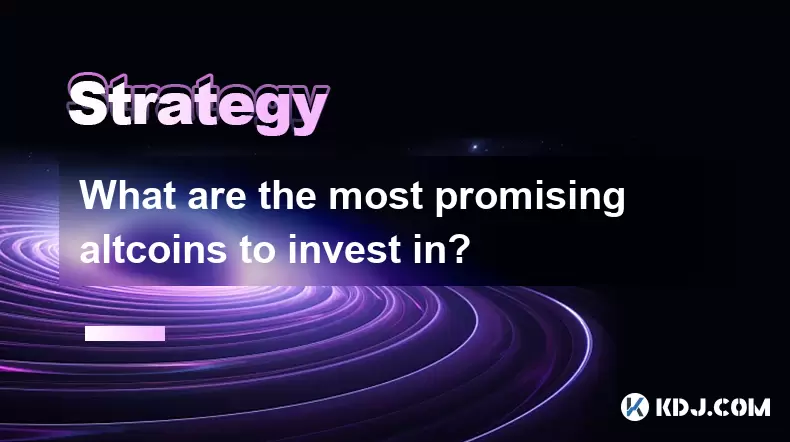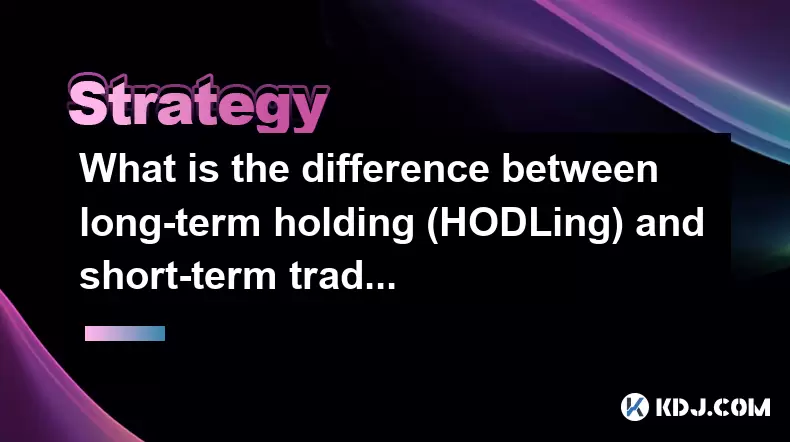-
 Bitcoin
Bitcoin $117600
0.25% -
 Ethereum
Ethereum $4424
0.10% -
 XRP
XRP $3.101
0.50% -
 Tether USDt
Tether USDt $1.001
-0.01% -
 BNB
BNB $836.2
1.26% -
 Solana
Solana $188.8
2.11% -
 USDC
USDC $1.000
0.01% -
 Dogecoin
Dogecoin $0.2301
0.57% -
 TRON
TRON $0.3485
-1.00% -
 Cardano
Cardano $0.9209
-1.34% -
 Hyperliquid
Hyperliquid $46.72
-1.19% -
 Chainlink
Chainlink $22.62
4.84% -
 Stellar
Stellar $0.4275
-0.38% -
 Sui
Sui $3.761
1.91% -
 Bitcoin Cash
Bitcoin Cash $586.7
-0.25% -
 Ethena USDe
Ethena USDe $1.001
0.01% -
 Hedera
Hedera $0.2510
2.06% -
 Avalanche
Avalanche $24.21
2.22% -
 Litecoin
Litecoin $119.7
1.07% -
 Toncoin
Toncoin $3.450
1.06% -
 UNUS SED LEO
UNUS SED LEO $9.411
-0.93% -
 Shiba Inu
Shiba Inu $0.00001298
1.20% -
 Uniswap
Uniswap $10.98
3.25% -
 Polkadot
Polkadot $3.961
2.16% -
 Dai
Dai $1.000
0.00% -
 Bitget Token
Bitget Token $4.642
0.95% -
 Cronos
Cronos $0.1514
0.57% -
 Ethena
Ethena $0.7290
3.78% -
 Monero
Monero $254.1
7.69% -
 Pepe
Pepe $0.00001102
2.47%
Short-term operation skills of currency speculation contracts
To effectively trade cryptocurrency futures contracts, it's essential to grasp the basics, develop a tailored strategy, choose a reputable platform, manage risk judiciously, and diligently track and examine your trading performance.
Jan 11, 2025 at 08:30 pm

Key Points of Short-Term Operation Skills of Currency Speculation Contracts
- Understanding the basics of cryptocurrency futures trading
- Developing a trading strategy
- Choosing the right trading platform
- Managing risk
- Executing trades
- Tracking and analyzing performance
In-Depth Explanation of Short-Term Operation Skills of Currency Speculation Contracts
Understanding the Basics of Cryptocurrency Futures Trading
Cryptocurrency futures contracts are a type of derivative contract that allows traders to speculate on the future price of a cryptocurrency. Futures contracts are typically settled in cash, meaning that the buyer of the contract is not obligated to take delivery of the underlying cryptocurrency. Instead, the buyer simply receives or pays the difference between the current price of the cryptocurrency and the price specified in the contract.
Futures contracts are traded on exchanges, which are centralized marketplaces that facilitate the trading of cryptocurrency futures contracts. The largest cryptocurrency futures exchanges include Binance, Huobi, and OKEx.
Developing a Trading Strategy
Before you start trading cryptocurrency futures contracts, it is important to develop a trading strategy. A trading strategy is a set of rules that guide your trading decisions. Your trading strategy should take into account your individual risk tolerance, investment goals, and trading experience.
There are many different types of trading strategies that you can use. Some of the most popular trading strategies include:
- Scalping: Scalping is a trading strategy that involves making small profits on a large number of trades. Scalpers typically hold positions for only a few minutes or hours.
- Day trading: Day trading is a trading strategy that involves opening and closing positions within the same trading day. Day traders typically hold positions for a few hours or less.
- Swing trading: Swing trading is a trading strategy that involves holding positions for several days or weeks. Swing traders typically take advantage of short-term price swings.
- Trend following: Trend following is a trading strategy that involves following the trend of the market. Trend followers typically hold positions for several weeks or months.
Choosing the Right Trading Platform
The right trading platform for you will depend on your individual needs. Factors to consider include:
- Exchange liquidity: The liquidity of an exchange is the amount of trading volume that it handles. A high-liquidity exchange will allow you to execute trades quickly and easily.
- Trading fees: Trading fees are the fees that you pay to the exchange to execute trades. You should choose an exchange with low trading fees.
- Security: The security of an exchange is very important. You should choose an exchange that has a strong security track record.
- Trading tools: Some exchanges offer a variety of trading tools, such as charting tools, technical indicators, and news feeds. You should choose an exchange that offers the trading tools that you need.
Managing Risk
Risk management is one of the most important aspects of cryptocurrency futures trading. There are a number of different risk management strategies that you can use, such as:
- Position sizing: Position sizing refers to the size of your trading positions. You should size your positions appropriately based on your risk tolerance and account balance.
- Stop-loss orders: A stop-loss order is an order that is placed to sell a cryptocurrency if the price falls below a certain level. Stop-loss orders can help you to limit your losses.
- Trailing stop-loss orders: A trailing stop-loss order is a stop-loss order that moves with the price of the cryptocurrency. This can help you to protect your profits if the market price increases in your favor.
- Take-profit orders: A take-profit order is an order that is placed to sell a cryptocurrency if the price reaches a certain level. Take-profit orders can help you to lock in your profits.
- Hedging: Hedging is a strategy that involves using multiple trades to reduce your overall risk. For example, you could buy a cryptocurrency futures contract and sell a spot cryptocurrency contract. This would reduce your risk because you would lose money on one contract if the price of the cryptocurrency increases, but you would make money on the other contract if the price of the cryptocurrency decreases.
Executing Trades
Once you have developed a trading strategy, chosen a trading platform, and implemented a risk management strategy, you can start executing trades.
To execute a trade, you need to first deposit funds into your trading account. Once you have deposited funds, you can place an order to buy or sell a cryptocurrency futures contract. The order will be filled when the price of the cryptocurrency reaches the price specified in your order.
Tracking and Analyzing Performance
It is important to track and analyze your performance over time. This will help you to identify areas where you can improve your trading skills. You can track your performance using a trading journal or a spreadsheet. You should include the following information in your trading journal:
- The date of the trade
- The cryptocurrency pair that you traded
- The type of trade that you executed
- The price at which you entered the trade
- The price at which you exited the trade
- The profit or loss that you made on the trade
By tracking and analyzing your performance, you can identify patterns in your trading. This will help you to improve your trading strategy and increase your profitability.
FAQs Related to Short-Term Operation Skills of Currency Speculation Contracts
What are the benefits of trading cryptocurrency futures contracts?
There are many benefits to trading cryptocurrency futures contracts, including:
- Leverage: Futures contracts allow you to trade with more capital than you have in your account. This can amplify your profits, but it can also amplify your losses.
- Short-selling: Futures contracts allow you to short-sell cryptocurrencies. This means that you can profit from falling prices.
- Hedging: Futures contracts can be used to hedge against the risk of price fluctuations. For example, a miner could use a futures contract to lock in the price of a cryptocurrency that they plan to sell in the future.
What are the risks of trading cryptocurrency futures contracts?
The risks of trading cryptocurrency futures contracts include:
- Liquidation: If the price of a cryptocurrency moves against you, you could be liquidated. This means that you will be forced to sell your position at a loss.
- Volatility: Cryptocurrency futures contracts are very volatile. This means that the price of a cryptocurrency can fluctu
Disclaimer:info@kdj.com
The information provided is not trading advice. kdj.com does not assume any responsibility for any investments made based on the information provided in this article. Cryptocurrencies are highly volatile and it is highly recommended that you invest with caution after thorough research!
If you believe that the content used on this website infringes your copyright, please contact us immediately (info@kdj.com) and we will delete it promptly.
- Kazakhstan's Crypto Leap: Bitcoin ETF and Central Asia's Digital Finance Future
- 2025-08-13 12:45:19
- BlockDAG Presale Blazes Past $371M: Fundraising Frenzy Fuels Crypto Sensation
- 2025-08-13 13:05:21
- Meme Coins: Chasing the 2025 Surge – Which Will Moonshot?
- 2025-08-13 10:25:23
- Bitcoin's Wild Ride: Rally, Pullback, and What's Next
- 2025-08-13 10:25:23
- Bitcoin, Bitmax, and Institutional Demand: A New Era of Crypto Investment
- 2025-08-13 10:45:12
- Solana, ROAM, and Airdrops: What's the Buzz in 2025?
- 2025-08-13 11:35:13
Related knowledge

How to use stop-loss orders to limit potential losses?
Aug 08,2025 at 02:01pm
Understanding Stop-Loss Orders in Cryptocurrency TradingA stop-loss order is a risk management tool used by traders to automatically sell a cryptocurr...

What are the most promising altcoins to invest in?
Aug 10,2025 at 11:42am
Understanding the Role of Private Keys in Cryptocurrency WalletsIn the world of cryptocurrency, private keys are the cornerstone of ownership and cont...

Should I invest in Bitcoin or altcoins?
Aug 13,2025 at 11:35am
Understanding Bitcoin and AltcoinsWhen deciding whether to invest in Bitcoin or altcoins, it's essential to first understand what each represents. Bit...

What are the most important metrics to look at when evaluating a cryptocurrency?
Aug 13,2025 at 11:36am
Market Capitalization: Understanding the Total ValueWhen evaluating a cryptocurrency, market capitalization is one of the most foundational metrics. T...

How to read cryptocurrency charts and use technical analysis?
Aug 08,2025 at 11:08am
Understanding the Basics of Cryptocurrency ChartsCryptocurrency charts are graphical representations of price movements over time. These charts are es...

What is the difference between long-term holding (HODLing) and short-term trading?
Aug 10,2025 at 05:30pm
Understanding HODLing in the Cryptocurrency SpaceThe term HODL originated from a typo in a 2013 Bitcoin forum post and has since become a widely accep...

How to use stop-loss orders to limit potential losses?
Aug 08,2025 at 02:01pm
Understanding Stop-Loss Orders in Cryptocurrency TradingA stop-loss order is a risk management tool used by traders to automatically sell a cryptocurr...

What are the most promising altcoins to invest in?
Aug 10,2025 at 11:42am
Understanding the Role of Private Keys in Cryptocurrency WalletsIn the world of cryptocurrency, private keys are the cornerstone of ownership and cont...

Should I invest in Bitcoin or altcoins?
Aug 13,2025 at 11:35am
Understanding Bitcoin and AltcoinsWhen deciding whether to invest in Bitcoin or altcoins, it's essential to first understand what each represents. Bit...

What are the most important metrics to look at when evaluating a cryptocurrency?
Aug 13,2025 at 11:36am
Market Capitalization: Understanding the Total ValueWhen evaluating a cryptocurrency, market capitalization is one of the most foundational metrics. T...

How to read cryptocurrency charts and use technical analysis?
Aug 08,2025 at 11:08am
Understanding the Basics of Cryptocurrency ChartsCryptocurrency charts are graphical representations of price movements over time. These charts are es...

What is the difference between long-term holding (HODLing) and short-term trading?
Aug 10,2025 at 05:30pm
Understanding HODLing in the Cryptocurrency SpaceThe term HODL originated from a typo in a 2013 Bitcoin forum post and has since become a widely accep...
See all articles

























































































